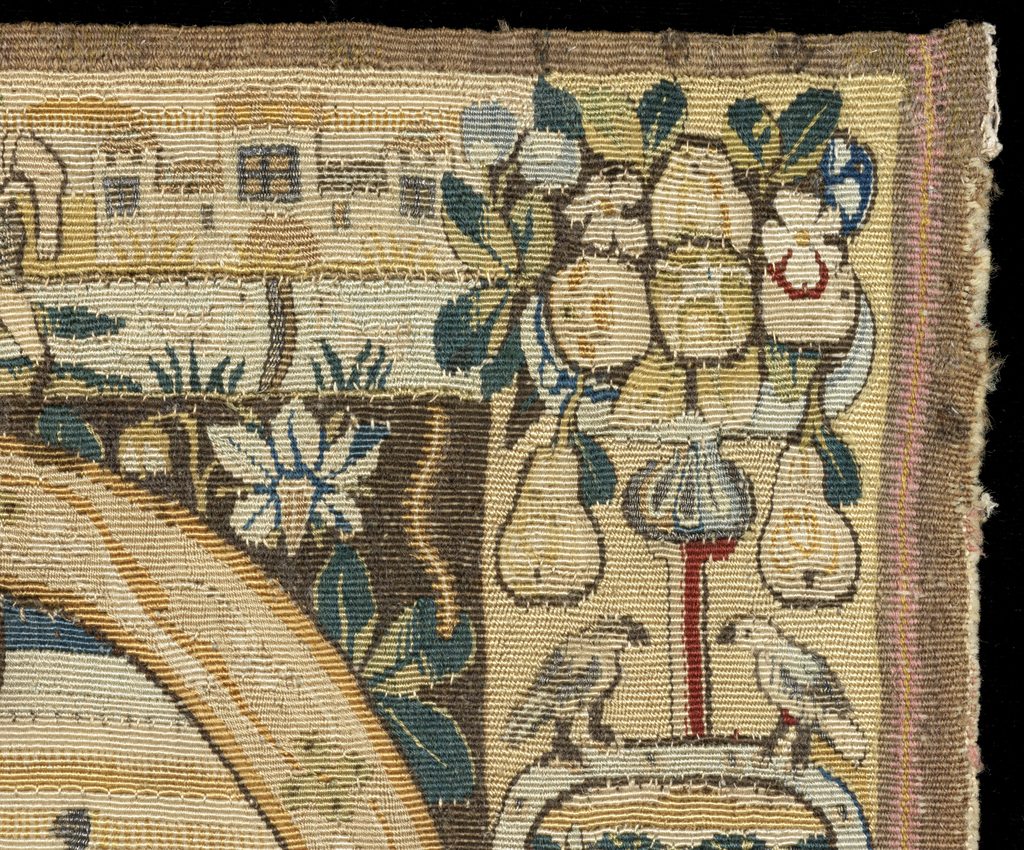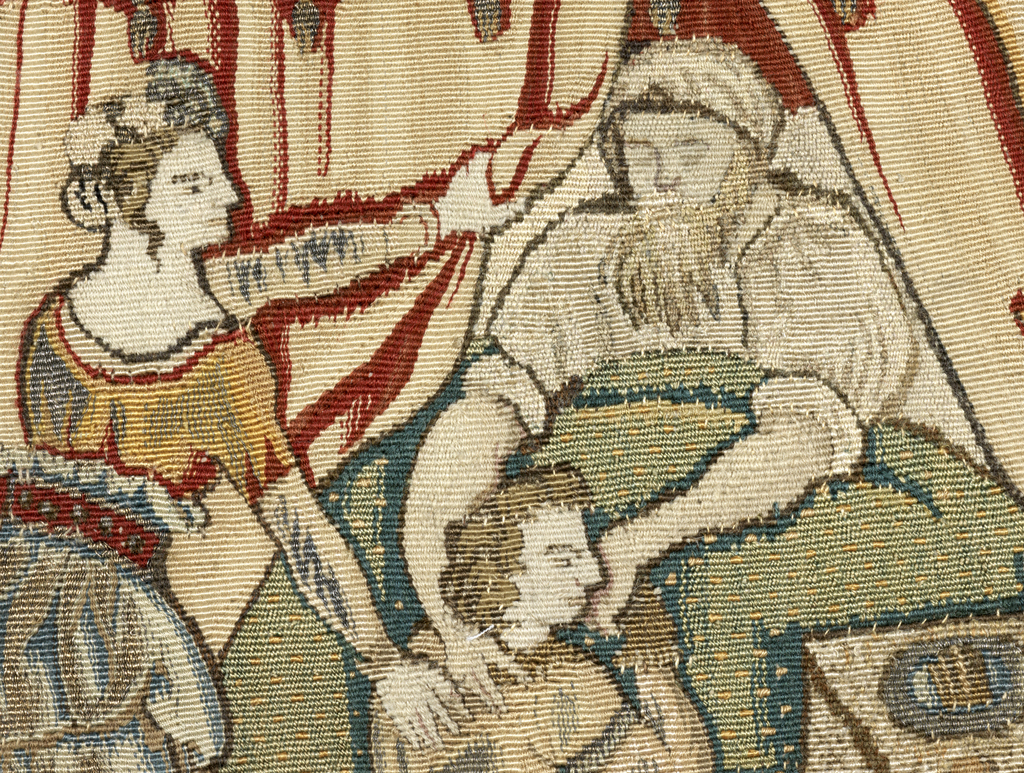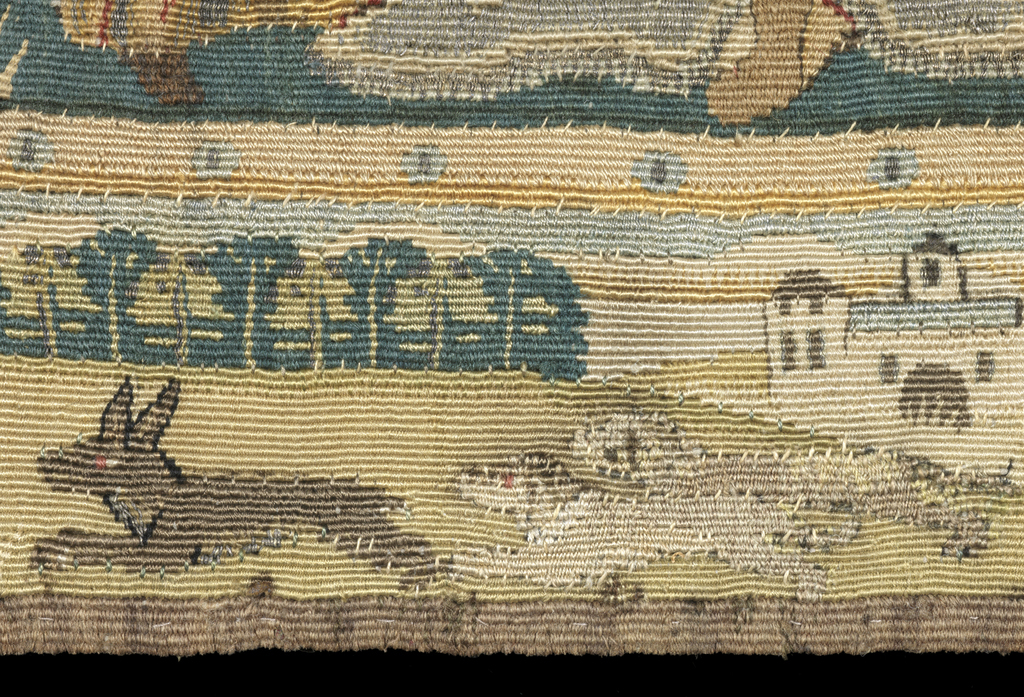Once agreed, the design, called the cartoon, was drawn out to the same size as the planned tapestry. Then the main outlines were painted onto the warp threads as a guide for the weavers. In a big tapestry the guidelines could only be painted bit by bit, because the loom was not large enough to expose all of the warp threads at once; as the tapestry was woven, the finished section was rolled out of sight onto the loom’s lower roller and a fresh section of warp threads wound down from above.
Depending on the kind of loom in use the completed cartoon was sometimes placed in front of the weavers, beyond the loom, so that they had to peer between the warp threads; more usually it was behind them. Weavers using a low warp loom placed the pattern underneath the warp threads.
Wherever the cartoon was positioned, the weaver always worked on the reverse side of the tapestry. No one saw the whole tapestry until it was complete and had been cut off the loom.
Tapestries like the Fitzwilliam examples were probably woven on a very simple frame, much smaller than a full-size loom. Even then the cartoon was not always faithfully reproduced. The design might be reversed, especially if the pattern was placed underneath the warp, because the weaver worked on the back of the tapestry. A man shown facing left in the pattern could face right in the completed product. This may explain the differences between the Museum’s tapestries and the print that may have inspired the cartoon.
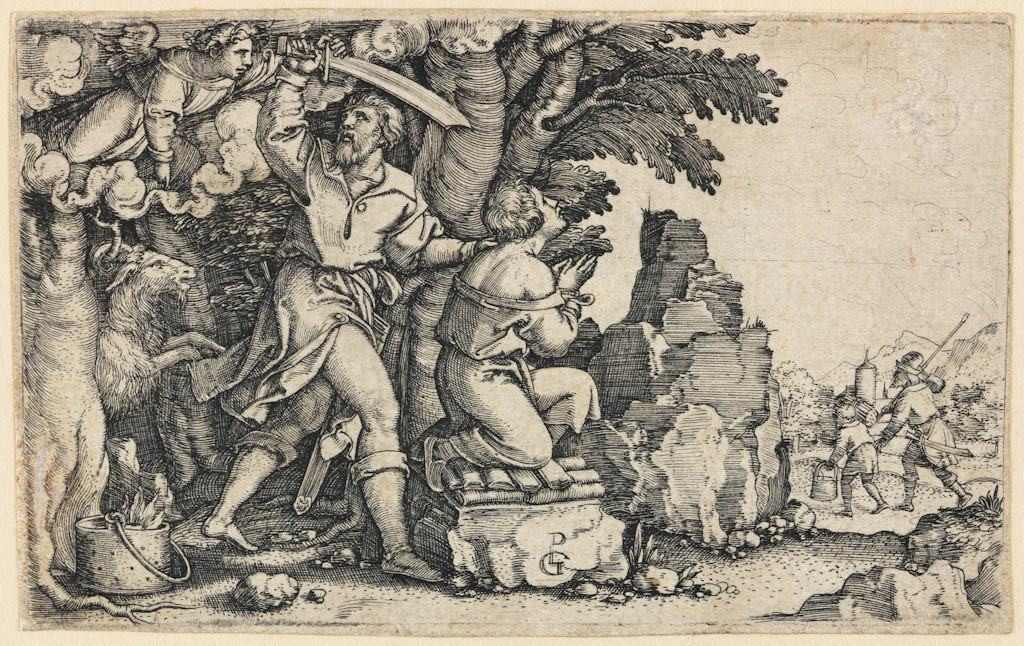
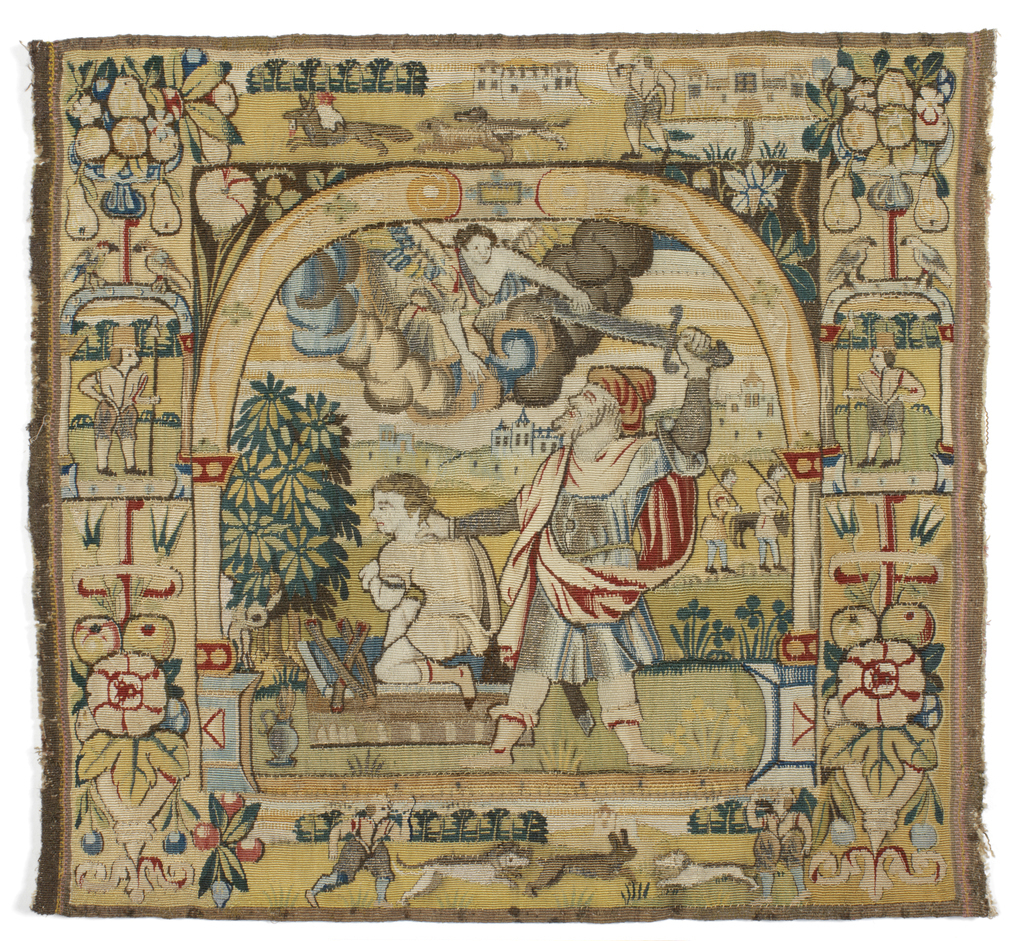
Where neighbouring blocks of different colours in the weft were not interwoven, a line of stitching can often be seen. This was done to add strength to the structure of the tapestry, to try to prevent the heavier warp threads splitting apart the weaker weft threads.
